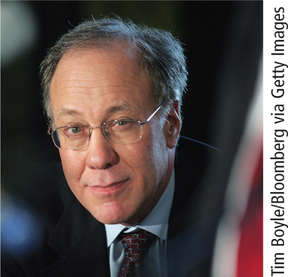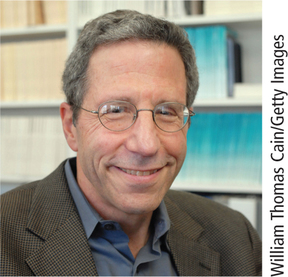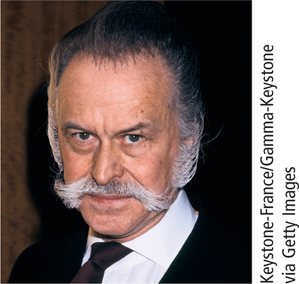15.1 Game Theory:
The Mathematics of Competition
15

- 15.1 Two-Person Total-Conflict Games: Pure Strategies
- 15.2 Two-Person Total-Conflict Games: Mixed Strategies
- 15.3 Partial-Conflict Games
- 15.4 Mechanism Design and Larger Games
- 15.5 Using Game Theory
How can mathematics help us understand bargaining tactics in labor-management disputes, military choices in international crises, threats by animals in habitat acquisition, strategic play in a soccer match, and resource-allocation decisions in political campaigns? Mathematics, and game theory in particular, can help whenever two or more individuals with different values or goals compete to try to control the course of events.
In this chapter, we will develop the necessary mathematical tools to study situations, called games, involving both conflict and cooperation (see Spotlight 15.1). Because the players in a game may be people, animals, organizations, or even countries, game theory can be used to model business, biology, politics, sports, and international relations, as well as decisions that you make in your life.
The Early History of Game Theory 15.1
15.1
As early as the 17th century, such outstanding scientists as Christiaan Huygens (1629–1695) and Gottfried W. Leibniz (1646–1716) proposed the creation of a discipline that would apply the scientific method to the study of human conflict and interactions. Throughout the 19th century, several leading economists created simple mathematical models to analyze particular examples of competitive encounters. These models eventually became known as games, and the mathematical subject took on the name game theory. In a textbook written by 2007 Nobel Prize-winning game theorist Roger Myerson, he lamented that the name “game theory” suggests that the subject focuses on the study of recreational activities. Although game theory can be used to analyze recreational games such as poker or checkers, it more broadly is used to analyze any situation in which cooperation and/or conflict is present.
The first general mathematical theorem in game theory was proved by the distinguished logician Ernst Zermelo (1871–1953) in 1912. Zermelo’s result showed that a certain class of games, called games of perfect information—in which at each stage of play, every player is aware of all past moves (by oneself and by others), as well as all future choices that are possible—has an optimal strategy. This is an example of an existence theorem: It states that there must exist a best way to play such a game, but it does not describe how to play optimally. An example of such a game is chess; optimal play is too complicated to determine, but people still enjoy playing chess—unlike tic-tac-toe, another, less complex, game of perfect information.
After Zermelo, a veritable who’s who of famous mathematicians and economists have worked in game theory, including mathematician F. E. Émile Borel (1871–1956), Hungarian-American mathematician John von Neumann (1903–1957), and John F. Nash, Jr. (1928–2015), who was portrayed in the movie A Beautiful Mind (2001). Collectively, they advanced the subject and its application by showing that more complicated classes of games also have optimal solutions.
In 2007, Myerson was awarded the Nobel Memorial Prize in Economic Sciences, along with Leonid Hurwicz and Eric S. Maskin, for their early work in designing games to achieve particular outcomes—called mechanism design—examined later in this chapter. Mechanism design analyzes auctions, bargaining, voting, and other procedures, especially providing incentives for players to be truthful. Spotlight 15.2 has additional information about Nobel Prizes awarded for game theory.
The French artist Georges Mathieu designed a medal for the Musée de la Monnaie in Paris in 1971 to honor game theory. It was the 17th medal to “commemorate 18 stages in the development of Western consciousness.”



